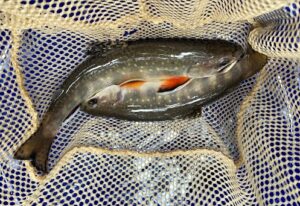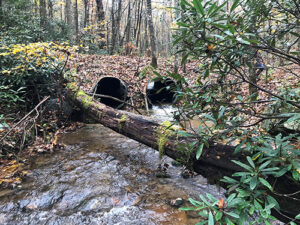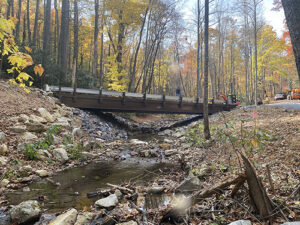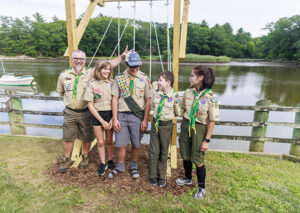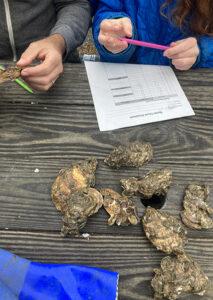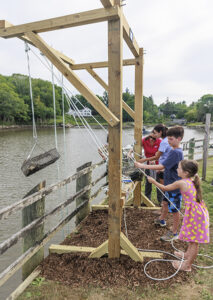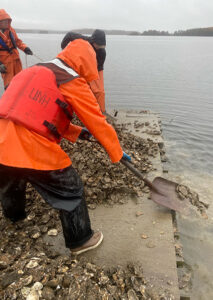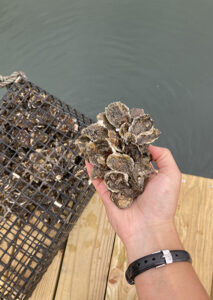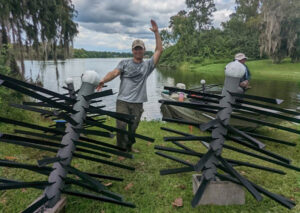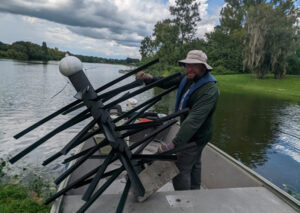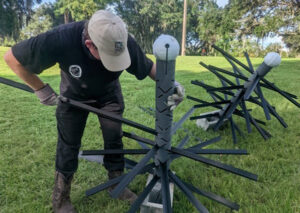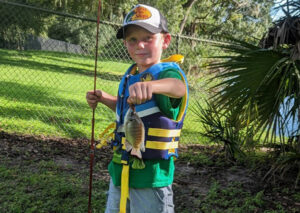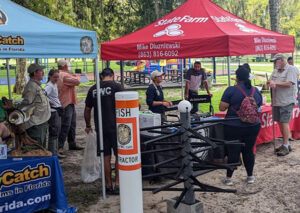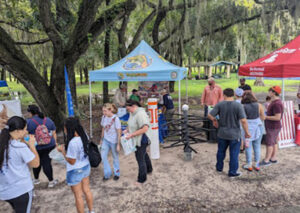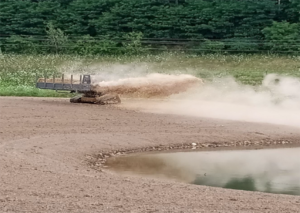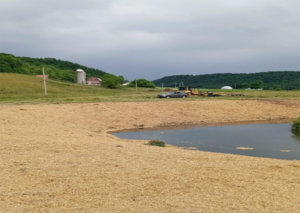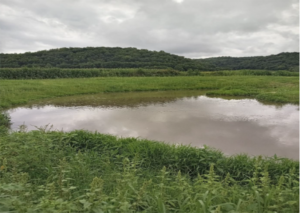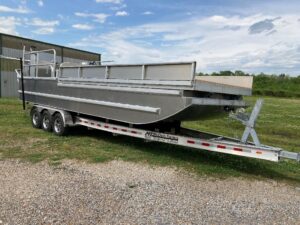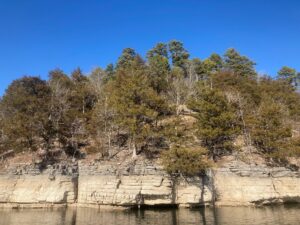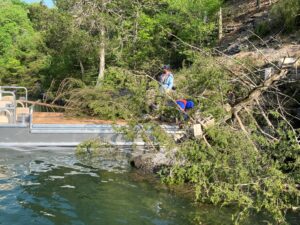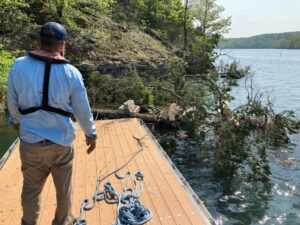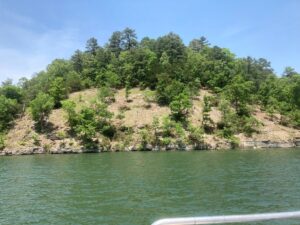Projects – 2022
The following conservation projects were funded with the generous support of the Brunswick Foundation.
The FishAmerica Foundation has partnered with the Brunswick Foundation. Their donations have contributed to programs that build essential reef habitat, that develop fisheries management and access plans, and prevent the littering of our waterways.
Learn about the projects funded in 2021.
Wolf Creek Trout Stream, Cocke County, TN
Trout Unlimited was awarded $12,000 to restore stream habitat for brook trout in Wolf Creek, Cocke County, TN. This project replaced a failing double-culvert crossing with a bridge to reduce sedimentation risk, reconnect the brook trout population, reconstructed the impacted stream bed to mimic a natural stream system, placed course wood material to create better stream habitat and revegetated the stream banks. TU and partners replaced the culverts with a better structure and rebuilt the stream bed; it is a top priority coldwater conservation project for Trout Unlimited and Cherokee National Forest. Volunteers installed necessary signage and plants on newly constructed stream banks to reduce sedimentation risks, removed silt fence once the banks stabilized, and helped in raising funds.
Great Bay Estuary Restoration
The Nature Conservancy in Concord, New Hampshire was awarded $10, 000 for a volunteer-based oyster restoration effort in Great Bay Estuary, NH. Due to pollution, disease, sedimentation and historical overharvesting, oyster numbers have decreased by over 90% resulting in only a little over a 100 acres of oyster reef today. Volunteers “adopt” a cage with oyster spat on shell for an eight-week period cleaning and caring for the cage while also collecting data throughout the summer on survival, growth, invasive species and wild oyster spat settlement. After this, the bags of oysters are collected and transported to oyster reef sites for planting. Oysters filter excess nutrients and suspended solids from the water column improving water quality and clarity. In addition, oyster reefs provide important habitat for fish and invertebrates by building large vertical complex reef structures.
Mary Holland Park Fisheries Improvement Project
The Florida Fish and Wildlife Conservation Commission was awarded $9,100 for the installation of fish habitat structures in Mary Holland Park in the City of Bartow, Polk County, Florida. This is a suburban recreation area with four small lakes created from old phosphate pits. The steep slope of the banks in these limits submersed and emergent vegetation. The agency and volunteers will install 100 artificial fish habitat structures in two of the lakes to create nearshore habitat that provide structure, shelter, and improve angler success. Volunteers will assist in the construction and deployment of the structures.
Blue River Habitat Improvement Project
This project on the Blue River, WI, a class II trout stream, will restore trout habitat on a stretch of river with stream bank easements allowing for public access by installing 69 log deflectors and 2 backwater hooks, reduce erosion and siltation, and make improvements to the riparian zone by cutting back slopes, anchoring edges, and eliminating heavy overhead weed tree cover. The project is already designed and permitting is started. Funding is for the first year of a 2-year project on this stretch of river that will improve 7,700 feet of streambank. FishAmerica funding was in conjunction with the Brunswick Foundation. Funds were used for supplies – stone, seed, and mulch – and contractual heavy equipment. A multi-year effort, this project was funded in 2019 and completed in 2022.
With the generous support of Grizzly, the following conservation project was funded for 2022.
The FishAmerica Foundation has partnered with American Snuff Co. and their Grizzly brand since 2014. Their donations have contributed to programs that build essential reef habitat, that develop fisheries management and access plans, and prevent the littering of our waterways.
Learn about the projects funded in 2021.
Beaver Lake/Big Clifty Creek Fish Habitat Enhancement Project
The Arkansas Game and Fish Commission, in conjunction with the Beaver Watershed Alliance, was awarded $80,000 for the Beaver Lake/Big Clifty Creek Fish Habitat Enhancement Project. This is an aging reservoir which has lost much of the course woody debris that originally provided habitat for fish populations. The goals of the project will be to improve fish, wildlife and glade habitats on Beaver Lake and Beaver Lake Wildlife Management Area (WMA) by removing invasive Eastern Red Cedar trees from several areas around the lake and place them in 110 sites within Beaver Lake to improve fish habitat. Thirty of these sites will be located close to public use areas to improve shoreline angling success and increase access to under-served communities. Additionally, excess sediment and nutrient inputs to Beaver Lake will be addressed by restoring 300 linear feet of eroded stream banks on a tributary stream, and use this as a demonstration project for other local landowners who have similar erosion issues on their property that are affecting water quality in Beaver Lake.


